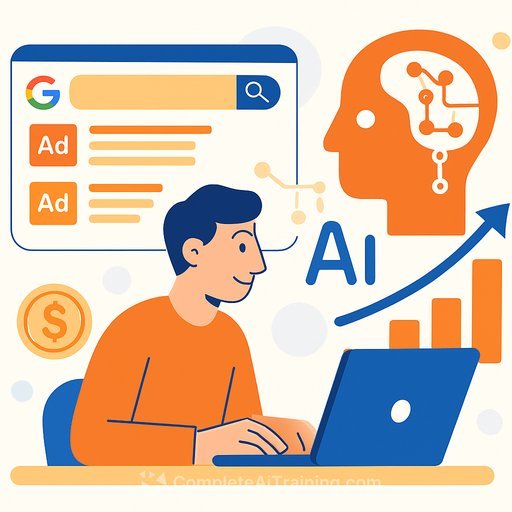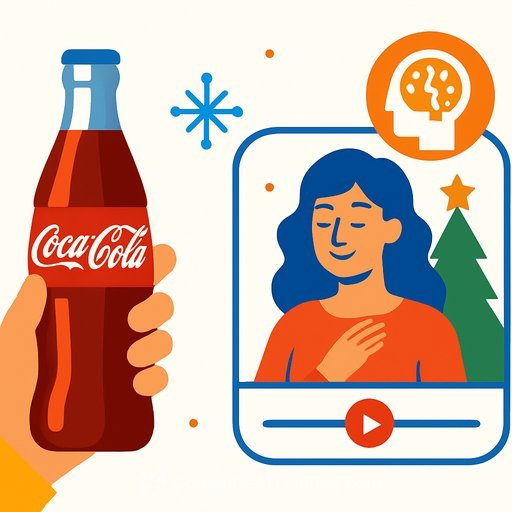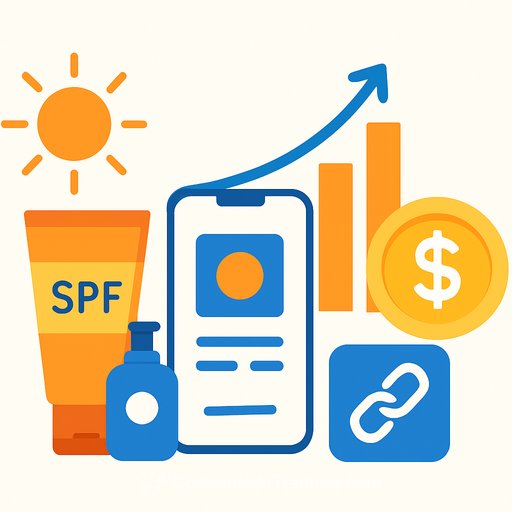Google's AI won't kill ads. It will change how you win them.
Robby Stein, VP of Product for Google Search, didn't flinch when asked if Google Ads is going away. "Don't see them going away." This came after an hour of AI demos that book tables, call businesses, and push recommendations in a conversational flow.
That combination matters. Google is pouring AI into search, but the ad business that funds it isn't being pushed aside. For marketers, this is your signal: paid placement remains central-while the surfaces and the rules evolve.
What Stein actually confirmed
Two clear points:
- Ads are staying. Google still sees strong search behavior and more entry points created by AI.
- Organic AI recommendations are separate from ads. "It doesn't use ads information." The AI looks at the web, Google's information systems, and structured data-not your ad spend.
He also noted that if a business has claimed and enriched its local profile-menu, services, hours, reviews-those signals can feed organic AI suggestions. Paid doesn't buy your way into those lists.
Why this matters for marketers
You'll be competing on two tracks that influence each other but are governed differently. Organic AI suggestions will be driven by data quality and reputation. Paid ads will continue to capture intent, but with new placements and formats woven into AI flows.
If you treat AI as a separate channel, you'll miss the compounding effect. The smarter move: align your organic data foundation with paid intent capture and creative built for conversational prompts.
Paid vs. organic: the wall is intact
- What influences AI recommendations: high-quality web content, structured data, accurate local profiles, product feeds, fresh reviews, pricing and availability.
- What doesn't: your ad budget, bids, or ad account history.
That separation protects user trust. It also raises the bar. If your feeds, profiles, and reviews are weak, you'll lose organic AI visibility even if your paid engine is strong.
What to do right now
- Clean your data layer: fix schema markup, product feeds, availability flags, and price accuracy.
- Max your local presence: claim profiles, add menus/services, update photos, nail hours, and reply to reviews.
- Invest in reviews: ask ethically, make it easy, and respond. AI will pull sentiment and recency.
- Restructure search campaigns: group by intent clusters that match conversational queries, not just keywords.
- Create modular assets: short benefit lines, FAQs, offers, and trust proof that can render in AI-style units.
- Feed > headline: prioritize Merchant Center hygiene, inventory sync, and attributes. Feeds will drive both organic mentions and ad relevance.
- Test broad + audience signals: let models match new phrasings while you control with negatives and clear conversion signals.
- Upgrade measurement: separate AI-influenced organic sessions from paid; check brand lift and assisted conversions, not just last click.
- Protect brand terms: expect new surfaces to siphon clicks; maintain brand coverage and test sitelink and asset variants.
- Prep for new formats: budget a test line item (5-10%) for AI-native ad units as they roll out.
Budget and bidding: practical adjustments
- Hold core intent budgets steady. High-intent queries will still monetize.
- Create an "AI surfaces" test bucket. Fund early betas and new placements without draining proven campaigns.
- Bid to value, not just CPA. Expect more assist touches. Use LTV and modeled conversions to avoid underbidding.
- Keep brand defense on. AI modules can compress the SERP. Don't lose demand you created.
Creative and assets for conversational flows
- Write for questions: mirror how people ask: "best for…", "near me", "budget vs premium", "fast shipping".
- Stack proof: ratings, counts, third-party badges, return policy, delivery windows.
- Use structured FAQs: short answers that AI can quote and ads can feature.
- Refresh often: AI leans on freshness. Rotate promos, seasonal angles, and new UGC.
Local and retail: your feed is your advantage
- Merchant Center: complete attributes, accurate GTINs, high-quality images, and real-time inventory.
- Local inventory ads: keep store-level availability current; AI favors "in stock now".
- Menus and services: add detailed items, categories, and pricing to your business profile.
- Operational signals: accurate hours, pickup options, delivery times. These win choices inside AI answers.
Measurement: read the new signals
- Break out AI-influenced traffic: annotate launches, use UTM discipline, and watch assisted conversions rise.
- Look at query themes, not just keywords: mine search terms for tasks and jobs-to-be-done that mirror conversational prompts.
- Track surfaces: segment performance by placement where possible. Expect CTR volatility as layouts shift.
- Blend MMM with platform signals: model contribution over longer windows; avoid cutting channels that assist earlier in the path.
What to watch next from Google
- AI-native ad units: formats that feel like recommendations or planners, not just blue links.
- Commerce integration: tighter loops from suggestion to checkout with inventory and returns data visible.
- Local intent modules: richer cards for "near me" with hours, slots, and direct booking.
- Reporting updates: new placement breakdowns and conversion modeling tied to AI experiences.
The takeaway
Ads aren't going away. They're getting stitched into AI-driven search flows next to organic recommendations that you can't buy. That means your advantage comes from two levers: paid intent capture with smart creative, and spotless data quality that earns organic inclusion.
Do the unglamorous work now-feeds, profiles, reviews, clean measurement-so when the new ad formats ship, your account is already set to win.
Want your team fluent in AI-era marketing? Explore a focused certification built for marketers at Complete AI Training.
Your membership also unlocks:





